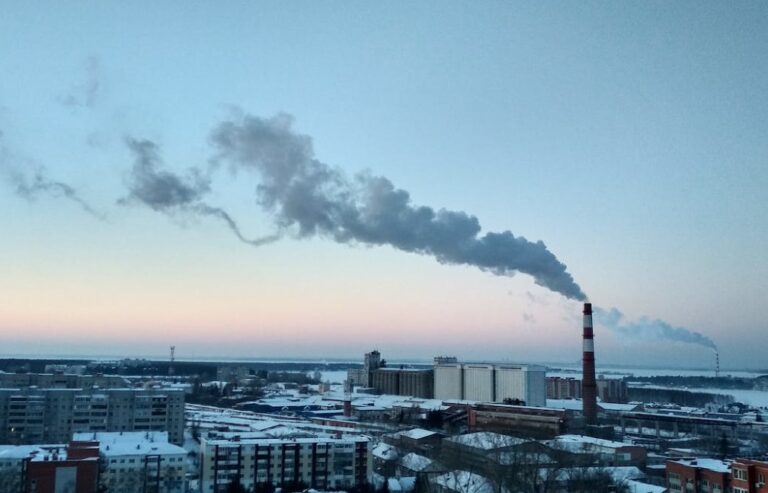Europe still continues to import a lot of gas from Russia. Despite the sanctions and new agreements with other producing countries. However, the interruption of Russian supplies decided by some EU states has produced negative effects on the entire economy and industry of the Old Continent.
This is certified by the Bank of Italy, in the report entitled “Natural gas and macroeconomics: not all energy shocks are the same”. In which it maintains that the resulting crisis in the gas market has produced much more long-lasting and negative repercussions compared to the crises of petrolium. Here’s how and why.
Table of Contents
Russian gas and market crisis in the EU
The Bank of Italy’s analysis highlights how “an increase in wholesale oil prices is immediately incorporated into the energy price index. While an increase in gas prices takes around a year to fully propagate, with a final impact around five years. times larger than the initial one.”
Making a historical-economic excursus, the central institute states that “the most severe restrictions on gas supply in Europe have systematically taken place following adverse natural events or political tensions linked to conflicts between Russia and Ukraine“. This is because such restrictions cause “a slowdown in economic activity and a rise in inflation”.
Unlike oil crises, however, gas market crises reveal their negative effects very gradually, “with a peak in inflation for non-energy goods following the initial shock by more than two years.” According to data reported by the Bank of Italy, the impact of a gas crisis is double that of a crude oil crisis.
Not only that. “The decline in gas supply significantly increases the prices of energy and primary goods over longer periods.” And it matters little if in the meantime many European states have taken action by signing supply contracts with third countries.
The reduced availability of gas in Europe from 2022 onwards was therefore a key element behind the surge in inflation and, consequently, the destabilization of the European economic system. To talk about the industrial plan.
In this context, it is Germany that feels the blow of the sharp cut in Russian energy supplies, which covered 50% of German energy needs. One of the main reasons for the economic and production crisis that Berlin has been dealing with for a while.
Europe’s energy dependence
Much of Europe has decided not to import any more Russian gas so as not to provide money that Moscow would use to wage war against Ukraine. Data in hand, however, in the first seven months of 2023 the Old Continent imported 40% more LNG compared to the same period of 2021.
In the podium of the nations that purchase the most gas from Russia on a global level, two are members of the EU. The first remains China (20% of the total gas used), while in second place is Spain (18%) and Belgium in third (17%).
Overall, Europe is the part of the world with the highest degree of energy dependence (55.5%). According to the fifth Med & Italian Energy Report, the most dependent country among the countries most dependent on foreign energy supplies is Italy (73.5%).
From January to July this year, EU member states purchased around 52% of the 41.6 million cubic meters of LNG exported from Russia in total. Last year the percentage was 49%, while in 2021 by 39%. According to Global Witness calculations, by the end of 2023 the quantity of gas imported will reach a historic record for the European Union, for a total amount of approximately 5.3 billion euros.
Total is the largest non-Russian buyer of liquefied gas: almost 4.2 million cubic meters of Russian LNG since the beginning of the year. Global Witness also reported that between March and December 2022, Shell had bought and sold 12% of all Russian supplies, amounting to more than 7.5 million cubic meters of LNG.
According to Kpler analyst Adam Bennett, around 90% of Russian liquefied natural gas flows over the next ten years will end up in Belgium, France, the Netherlands and Spain.
Meanwhile, Qatar is moving
It is not only Algeria and the United States (other large LNG exporters) that are “undermining” the Russian reign of gas in Europe, but also a Gulf country that is acquiring increasingly more international centrality also due to its role as mediator in the conflict between Israel and Hamas: Qatar.
After striking a supply deal with France, the small but mighty emirate will also send gas to Shell in the Netherlands for 27 years. Before looking to the Old Continent, Qatar had already become the world’s leading exporter of liquefied natural gas thanks to long-term supplies signed on the Asian market.
The Arab country has implemented a plan that will increase its liquefaction capacity from 77 mtpa to 126 mtpa by 2027. By virtue of this, from 2026 Qatar will be able to send rivers of LNG to Rotterdam, at the rate of approximately 3.5 million tons per year.
All through two joint ventures between QatarEnergy and Shell as part of the North Field LNG expansion project. And all this even without the clear contrast between the Qatari project and the EU’s declared objective of zero emissions by 2050.
The agreement, according to the president of QatarEnergy, Saad al-Kaabi, demonstrates the country’s commitment “to meet European energy demand and to strengthen energy security with a source known for its superior economic and environmental qualities”.












